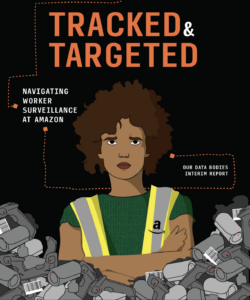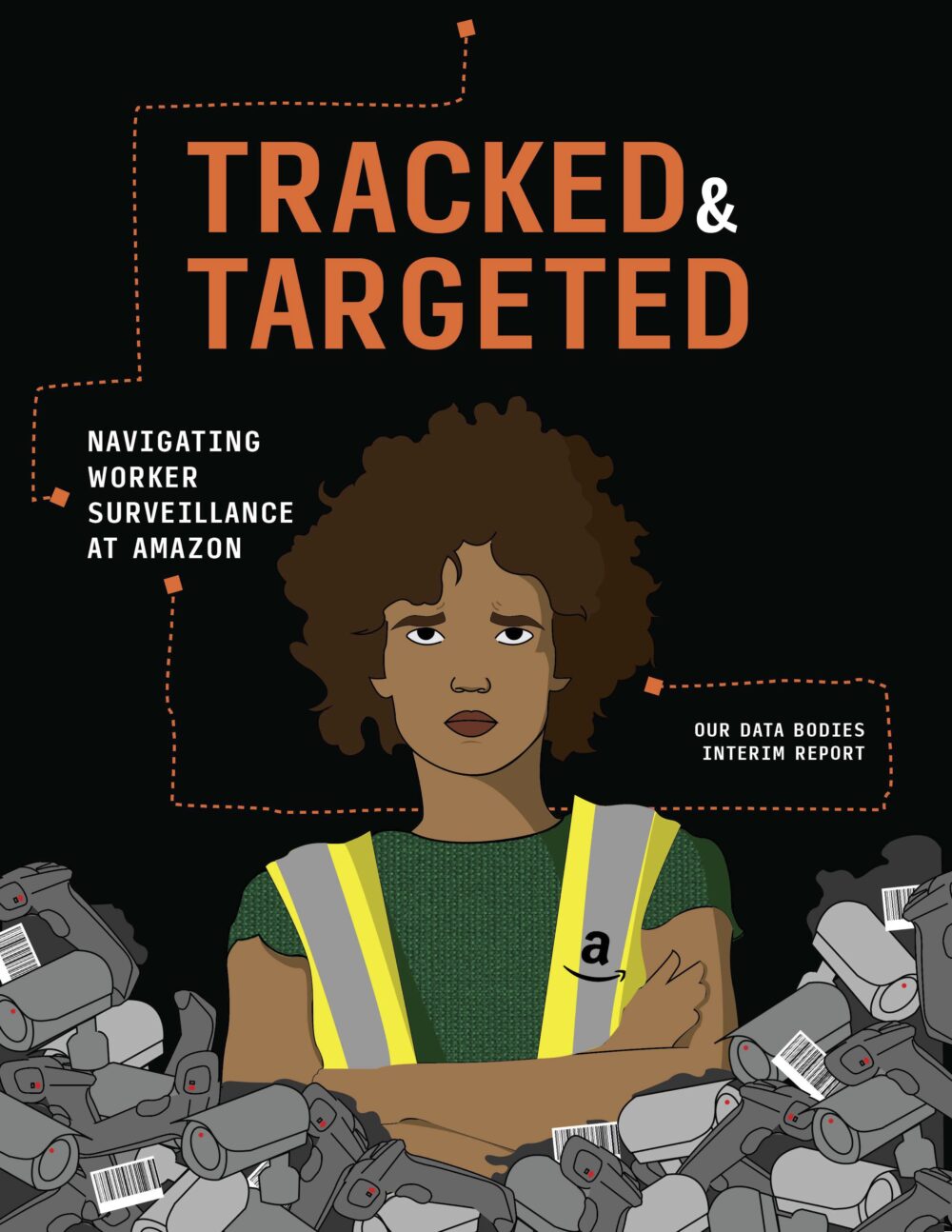Surveillance, Policing and Punishment in Low-Wage Work at Amazon
Our Data Bodies’ interim findings on surveillance of low-wage workers at Amazon are now published! Tracked and Targeted: Navigating Worker Surveillance at Amazon features insights and stories based on an initial analysis of 21 interviews we conducted with current and former workers.
Our qualitative, participatory study1Details on our participatory methodology can be found here: https://www.odbproject.org/2023/11/15/odb-at-work-methodology/. completed in partnership with United for Respect, brings to light policing and punishment that happens within Amazon fulfillment centers. Some key themes include:
- Pervasive surveillance in the workplace connects to pervasive mental health struggles.
- Surveillance in the workplace sets up a rigged system where workers bear the burden of responsibility for performance and productivity issues.
- Surveillance systems enhance Amazon’s ability to act with impunity.
- Workers cope with and challenge Amazon’s surveillance system as a matter of survival, necessity, and dignity, albeit under precarious and unpredictable circumstances

The connection between surveillance, policing, and punishment resonate with previous ODB research that examined the impacts of data-driven technologies and the ability of marginalized people to meet their basic human needs. In reflections on how every action is recorded and optimized, workers described being degraded in ways that mirror our formative investigation in which participants said they felt dehumanized under the constant watch of police, welfare agencies, or other institutions aiming for efficiency in managing marginalized populations. Workers described feeling easily replaceable, a sentiment similar to the sense of disposability expressed by participants in our previous research.
ODB’s ongoing commitment to working with communities to generate knowledge is reflected in our partnership with United for Respect and Athena Coalition and centers the understanding of surveillance systems and practices in daily life through the process of ordinary conversation of those most affected. Our questions centered around how workers experience productivity and performance targets in Amazon warehouses–both inside and outside the workplace. According to our interviews, workers view Amazon’s tools and techniques used for productivity and performance to justify impossible work rates, which if unmet, resulted in automated write-ups, deduction of time off, injuries, or even termination.
Many workers we spoke with felt surveillance techniques connected to power imbalances in the workplace where managers micromanage, de-personalize, and unfairly punish workers. We found a pattern of ableism, racism, and sexism expressed by workers as manifesting in Amazon. Workers talked about the dynamics of Amazon hiring young, white, newly college graduated men as managers compared to mostly Black and Brown people working as “associates” on the shop floor.
Amazon workers also shared that there is a pervasive sense of anxiety that affects many people’s mental health. The threat of not meeting quota–and being perpetually reminded of this through metric apps and scanners–creates a hostile environment for people with disabilities. Combined with managers who lack personal connection or familiarity with workers tasked with packing and picking, the sense of replaceability leaves many workers mentally worn down. Anxiety was the norm–be it the anxiety of meeting quota or of holding out for or not taking bathroom breaks or of anticipating or absorbing blowback from managers automatically alerted of performance dips.
In all, Tracked and Targeted: Navigating Worker Surveillance at Amazon details the emotional, physical, and material costs of being watched and pushed to optimize productivity and performance models. The report features a total of 10 key themes, four composite characters that narrate their day-to-day encounters with being policed and punished, as well as an inventory of surveillance systems and practices.
To read the full report, please click here.
To learn more about Our Data Bodies, find examples of our previous work on surveillance and marginalized, minoritized communities, visit this page.

